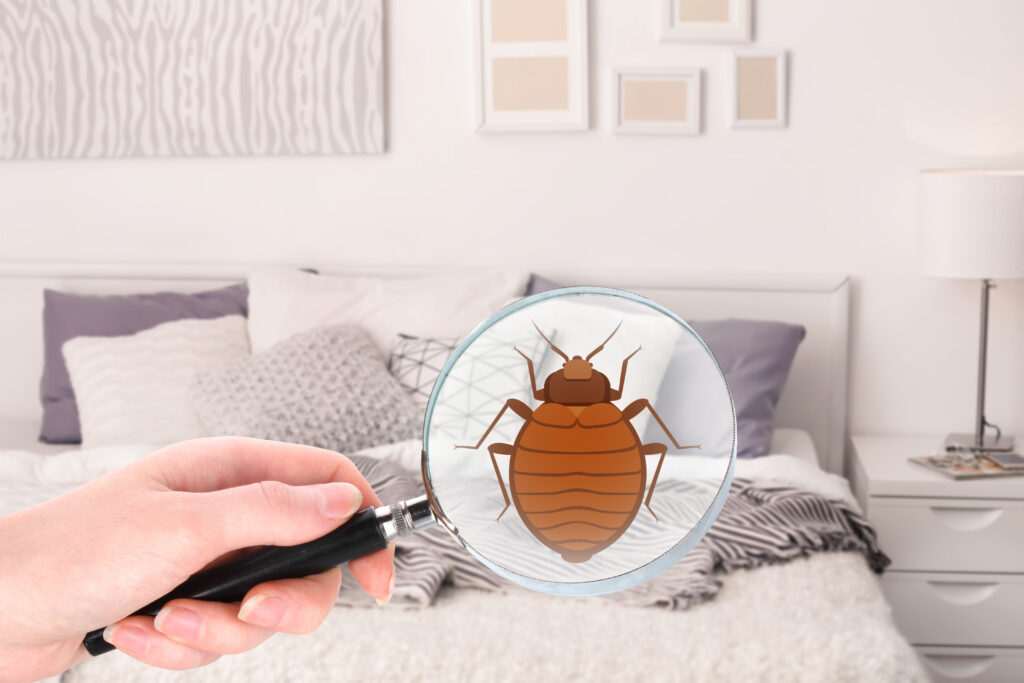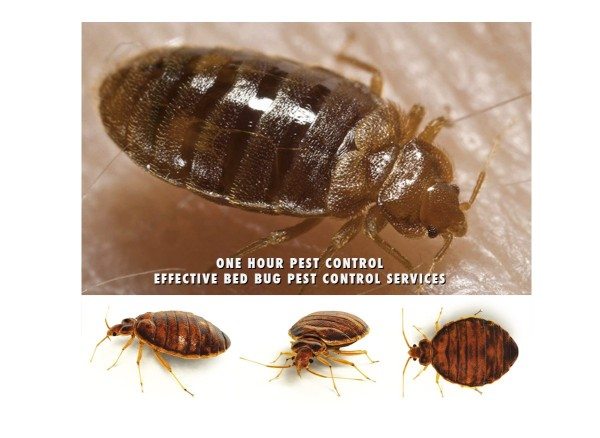Comprehensive Bed Bug Heat Treatment Services for Complete Elimination
Comprehensive Bed Bug Heat Treatment Services for Complete Elimination
Blog Article
Obtain Educated About the Types of Pest Control Methods and Their Advantages for Home Owners
Comprehending the various parasite control techniques readily available to property owners is essential for reliable pest management. Property owners that are well-informed can make calculated choices that not only address bug concerns but likewise enhance the general top quality of their living atmosphere.
Chemical Parasite Control Methods
Chemical parasite control methods are an essential component of integrated insect monitoring techniques for house owners looking for effective services to pest invasions. These approaches involve the application of chemical substances developed to remove or hinder pests that threaten personal effects, health and wellness, and convenience. Usual chemicals made use of consist of insecticides, herbicides, rodenticides, and fungicides, each tailored to target certain bugs.
The key benefit of chemical parasite control is its rapid effectiveness; numerous formulations offer prompt outcomes, lowering pest populations dramatically in a short time. Furthermore, breakthroughs in chemical solutions have actually resulted in items that are a lot more ecologically friendly and have lower poisoning degrees for non-target microorganisms when applied correctly.

Organic Pest Control Techniques
All-natural bug control methods have gotten prominence as home owners look for much safer and much more lasting alternatives to standard chemical methods. Organic insect control methods make use of all-natural killers, parasites, or pathogens to handle bug populaces effectively. This method is not only eco-friendly yet additionally reduces the danger of damage to non-target varieties, consisting of useful pests and wild animals.
One of the most typical organic control approaches entails introducing natural predators into the setting. Ladybugs can be used to control aphid populaces, while nematodes target soil-dwelling pests like grubs. Furthermore, parasitoids-- microorganisms that reside on or within a host-- can be employed to manage particular parasite varieties by laying eggs inside them, inevitably bring about their death.
One more approach is using biopesticides, which are obtained from natural materials such as plants, minerals, or microorganisms (bed bug exterminator). These products can effectively target parasites while posturing very little risk to family pets and humans. Overall, biological pest control strategies provide house owners with an effective methods of parasite monitoring that straightens with ecological principles, promoting a healthier living setting while reducing dependence on synthetic chemicals
Mechanical Pest Control Approaches
Mechanical bug control strategies incorporate a variety of approaches that physically protect against or eliminate parasites without the use of chemicals. These strategies are particularly advantageous for home owners seeking eco-friendly options while ensuring the security of their living spaces.
One typical method is using obstacles, such as internet, displays, and catches, which protect against parasites from entering homes or certain locations. Installing window displays can successfully maintain insects useful site out, while utilizing physical obstacles around yards can hinder larger insects like bunnies or deer. Additionally, mechanical traps designed for rodents can catch and get rid of these bugs without the requirement for harmful compounds.
One more efficient method involves using brooms and vacuums to remove pests directly from surfaces. Normal cleansing and upkeep can significantly reduce pest populations by removing food resources and concealing areas. Utilizing gadgets like ultrasonic bug repellents can deter various insects through sound waves that are unpleasant to them yet faint to people.
Cultural Parasite Control Practices
Social insect control practices concentrate on changing the atmosphere and management strategies to produce conditions that are much less for pest invasions. These practices are basic in preserving a balanced ecosystem and lowering the dependence on chemical interventions. By modifying farming practices, property owners can successfully hinder bugs while promoting plant health.
One common approach includes crop turning, which interferes with the life cycles of insects by changing the kinds of plants grown in a details area (bed bug exterminator). This not just reduces pest populaces but additionally improves dirt health. Furthermore, intercropping-- growing varied plants in closeness-- can perplex pests and decrease their capability to situate their preferred host plants
Water monitoring is one more important aspect of cultural techniques. Proper irrigation strategies can avoid standing water, which functions as a breeding place for mosquitoes and various find more info other insects. Preserving sanitation in and around the home, such as routinely eliminating particles and food waste, can dramatically reduce insect tourist attraction.
Including these social techniques right into a comprehensive insect administration method permits home owners to create an environment that naturally discourages insects, consequently improving the efficiency of other control techniques while promoting sustainable gardening and landscaping.

Integrated Bug Management Approaches
Integrated Pest Monitoring (IPM) represents a holistic strategy that integrates various strategies to properly handle pest populaces while decreasing environmental impact. This method integrates organic, cultural, physical, and chemical techniques to accomplish sustainable bug control. By examining pest populations and their all-natural enemies, IPM stresses tracking and identifying parasites before implementing control measures.
Among the core principles of IPM is making use of limits, which establish the degree of bug activity that necessitates intervention. This makes certain that therapies are applied just when necessary, minimizing the reliance on chemical pesticides. Organic control techniques, such as introducing natural killers or parasites, operate in combination with cultural techniques like plant rotation and habitat adjustment to interfere with pest life process.
Additionally, IPM urges using least-toxic chemical options when intervention is needed, prioritizing products that present marginal risk to non-target organisms and the atmosphere. For homeowners, embracing IPM comes close to not just boosts the efficacy of insect monitoring yet also promotes a much healthier living setting, cultivating biodiversity and minimizing chemical direct exposure. Inevitably, IPM equips home owners to make educated choices that balance pest control with ecological duty.
Conclusion
In conclusion, recognizing the various parasite control techniques encourages property owners to make enlightened decisions regarding pest administration. Each approach-- chemical, biological, mechanical, social, and integrated bug management-- supplies distinct benefits that cater to various demands and preferences.
Understanding the numerous insect control approaches available to house owners is important for reliable pest administration.Chemical bug control pet safe pest control methods are an important part of integrated bug monitoring strategies for house owners looking for effective services to pest invasions. On the whole, biological bug control strategies offer homeowners with a reliable methods of parasite administration that straightens with eco-friendly concepts, advertising a healthier living environment while decreasing dependence on synthetic chemicals.
Social parasite control methods concentrate on modifying the environment and management techniques to create conditions that are less conducive to pest infestations.In conclusion, understanding the various insect control methods empowers homeowners to make enlightened choices pertaining to pest monitoring.
Report this page